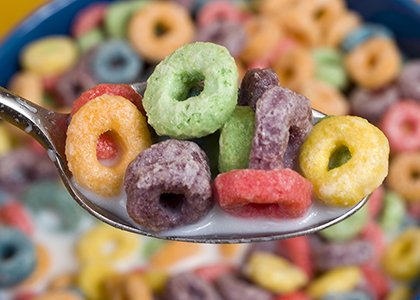
The Truth about Artificial Sweeteners
By Isabel Smith, MS, RD, CDN
At one time (like many things), it was believed that removing real sugar from foods and adding artificial sweeteners that offer much more sweetness without the calories would be a good thing. After all, less calories would help whittle waistlines, control blood sugar, and allow us to have sweets without suffering the consequences of eating too much sugar, right? Turns out that belief is wrong. Like most “magic fixes” that seem perfect at the start, the use of artificial sweeteners has the potential to be uglier than we may have thought.
What are the sweeteners?
- Artificial sweeteners: Artificial sweeteners do not exist in nature. They are entirely manufactured and do not contain any calories. They are often sweeter than regular sugar (see below).
- Found in: Processed foods including jams, jellies, candies, sodas and beverages, cereals and more.
- Includes:
- Acesulfame Potassium (Sunnett, Sweet One): 200 times sweeter
- Aspartame (Equal, NutraSweet): 180 times sweeter
- Neotame: 8,000 times sweeter
- Saccharin (SugarTwin, Sweet N’Low): 300 times sweeter
- Sucralose (Splenda): 600 times sweeter
- Sugar alcohols: Sugar alcohols are both naturally existing carbohydrates found in fruits and vegetables and also chemically manufactured. Sugar alcohols do contain some calories and unlike artificial sweeteners are equally or less sweet than regular sugar. Some dietitians and nutritionists do recommend xylitol that’s in a relatively unprocessed form to clients — this is up to their personal preference.
- Found in: Mouthwash, chocolate and other candy, frozen desserts, processed foods, chewing gum, toothpaste, basked goods and fruit spreads and more.
- Includes:
- Erythritol
- Hydrogenated starch hydrolysate
- Isomalt
- Lactitol
- Maltitol
- Mannitol
- Sorbitol
- Xylitol
- Other sweeteners: These are often referred to as novel sweeteners and are Generally Recognized as Safe (GRAS) by the FDA, although not fully approved. These may or may not be processed, but most of them are derived in some part from nature. Stevia is the most commonly used of these sweeteners.
- Includes:
- Stevia extracts (Truvia, Pure Via)
- Tagatose (found naturally and derived from lactose- not entirely sugar free)
- Trehalose (from mushrooms)
- Includes:
What’s the research saying?
There is a lot of research pending in the areas of artificial sweetener consumption. However there is some newer research that may be suggestive of a few different things with respect to how artificial sweeteners affect our bodies:
- Artificial sweeteners may not be as satisfying: Research suggests that regular sugar may stimulate certain areas of the brain associated with food reward, where sucralose did not activate this reward center. This may mean we are less satisfied by artificial sweeteners.
- May decrease insulin sensitivity by altering healthy gut microbiota: Research suggests that artificial sweeteners may decrease insulin sensitivity (thereby potentially increasing risk for diabetes due to effects on the balance of healthy gut bacteria). This is negative for two reasons: firstly for the health and balance of the gut microbiome, but also for the sake of elevated blood sugars- bad for both people with and without diabetes.
Much research is still being conducted about the safety and efficacy of the long-term use of artificial sweeteners, so in order to get a really full picture we’ll need more research. It’s also important to note that excessive consumption of artificial sweeteners may contribute to a laxative effect, so if you do consume them, do so in moderation or not at all.
What about Stevia?
Stevia is naturally derived from the stevia leaf, and when stevia leaf extract is used, it’s a fairly natural and unprocessed sweetener, although it too is many times sweeter than sugar (300 times sweeter to be exact). However, for most of us using stevia that is in the form of sugar granules from some of the major brand names, the issue is in the processing. To make the stevia form into sugar-like granules, most often maltodextrin may be used that can contain Monosodium Glutamate (MSG).
Natural sweeteners include:
- Cane sugar
- Maple syrup
- Dates
- Agave nectar
- Honey
- Molasses
- Stevia leaf extract (similar yet still a non-nutritive sweetener but better than the others, which is why it makes this list)
What’s the take-home?
Keep it real. At Reboot with Joe, and as a Registered Dietitian, we believe we should “keep it real” as much and as often as possible. I always recommend that clients try to use natural versions of sweeteners whenever possible (after all 1 teaspoon of sugar only has 15 calories, which is negligible as long as it’s not a multiple-time-daily thing) and hold off on the artificial stuff, that includes sugar alcohols.
Our bodies have developed over many years to expect a certain amount of calories with a certain amount of sensed sweetness, so I just don’t think it’s a system we should play too much with. Regardless, and like anything else, aim to consume regular sugar and natural sweeteners in moderation.